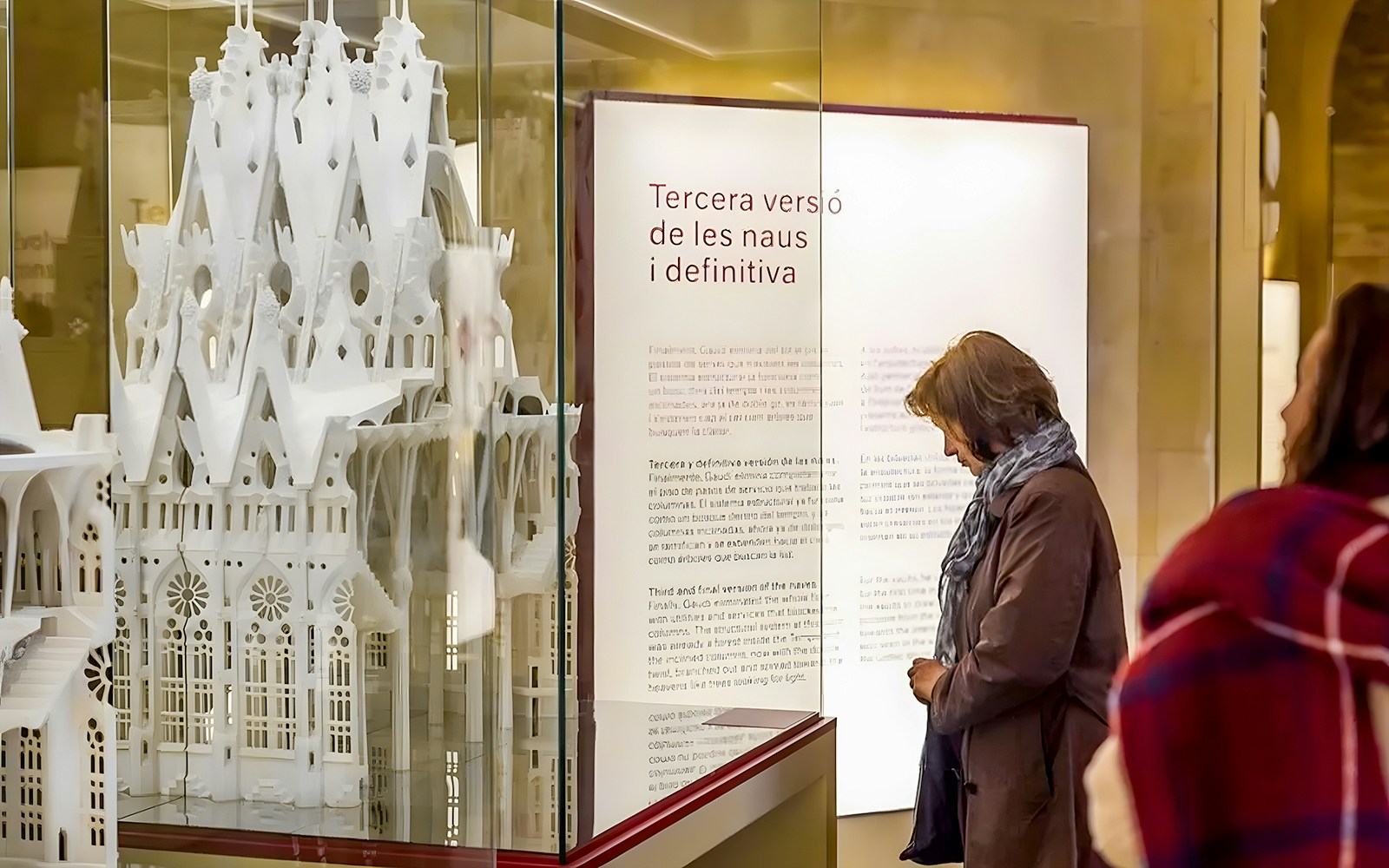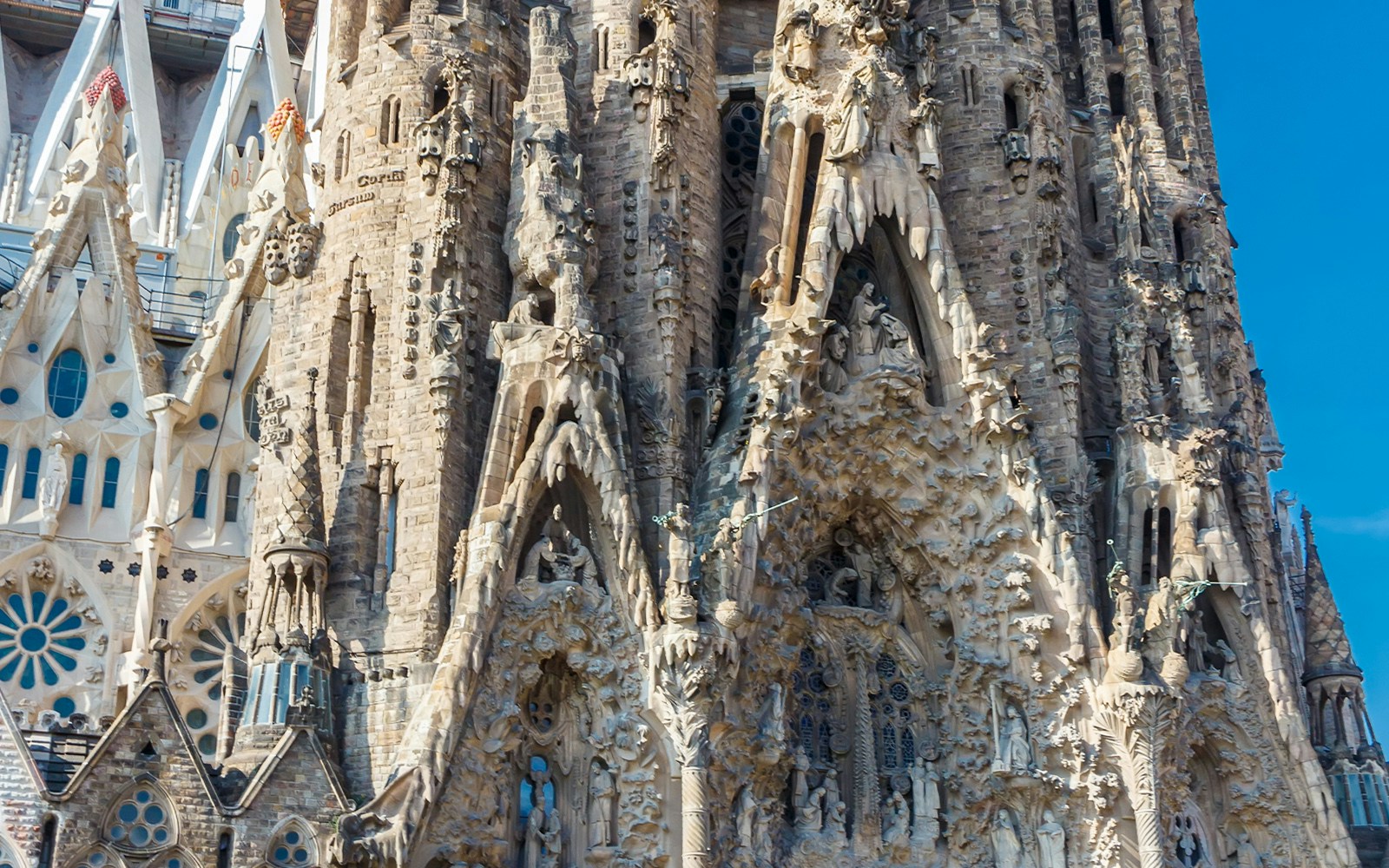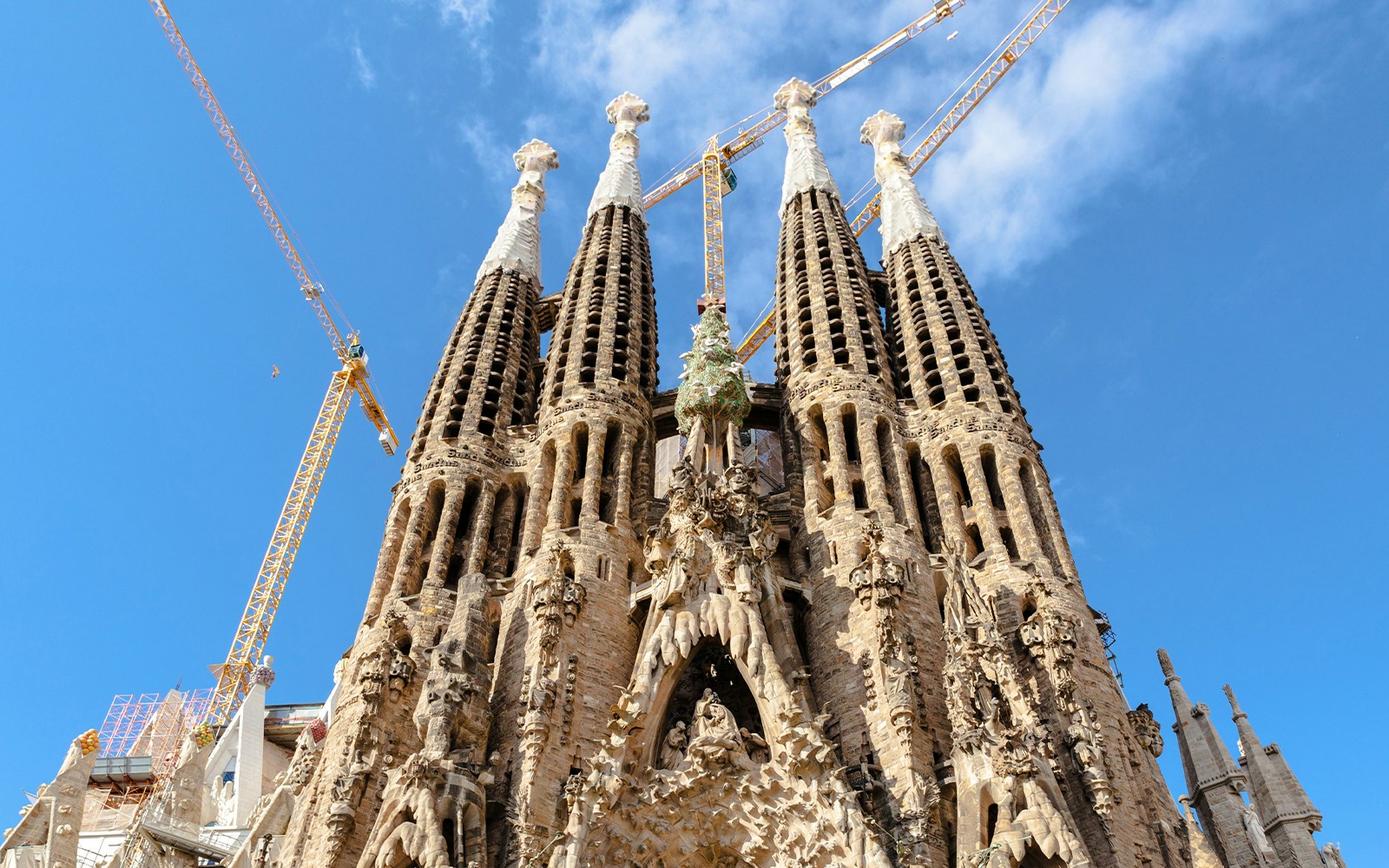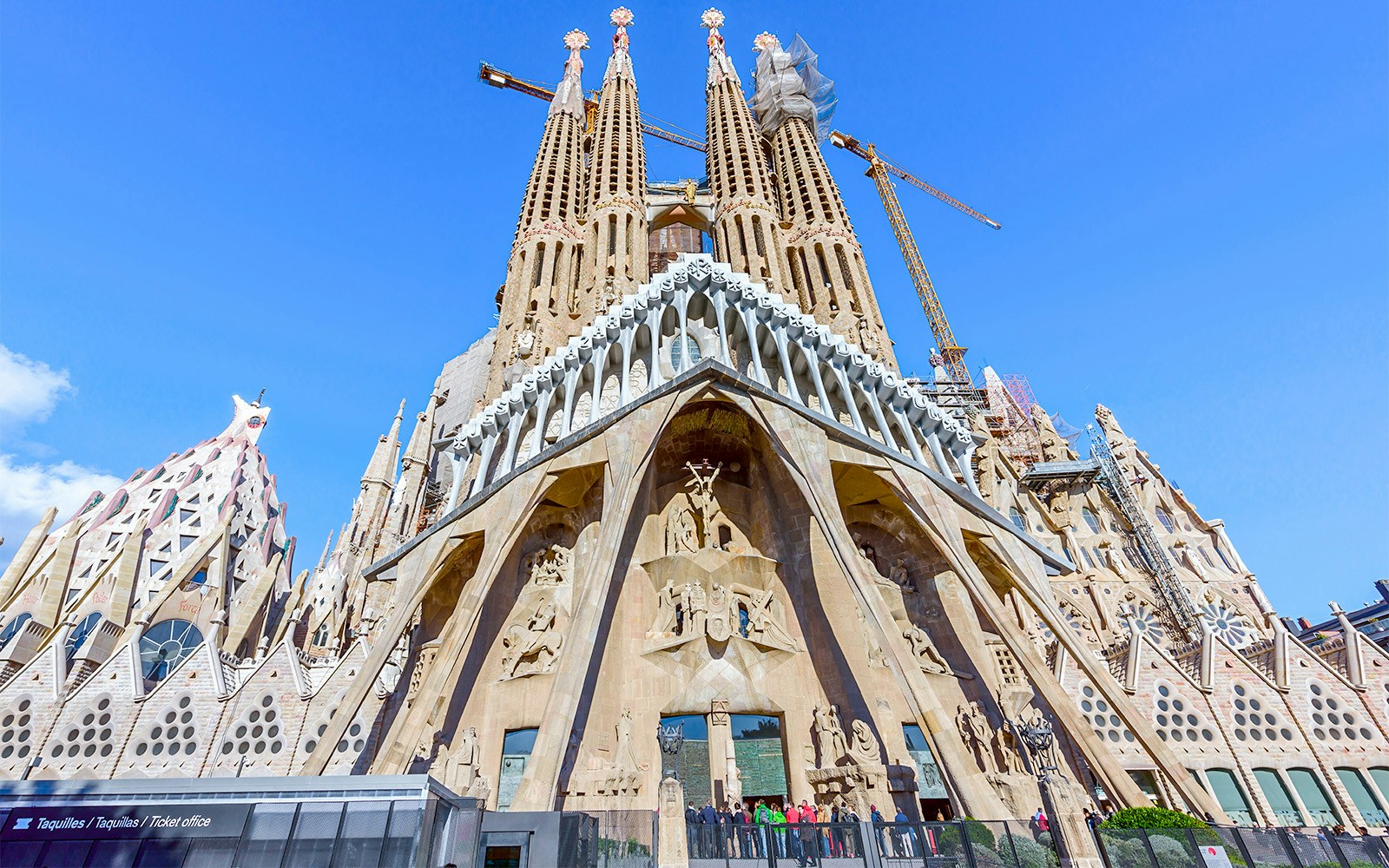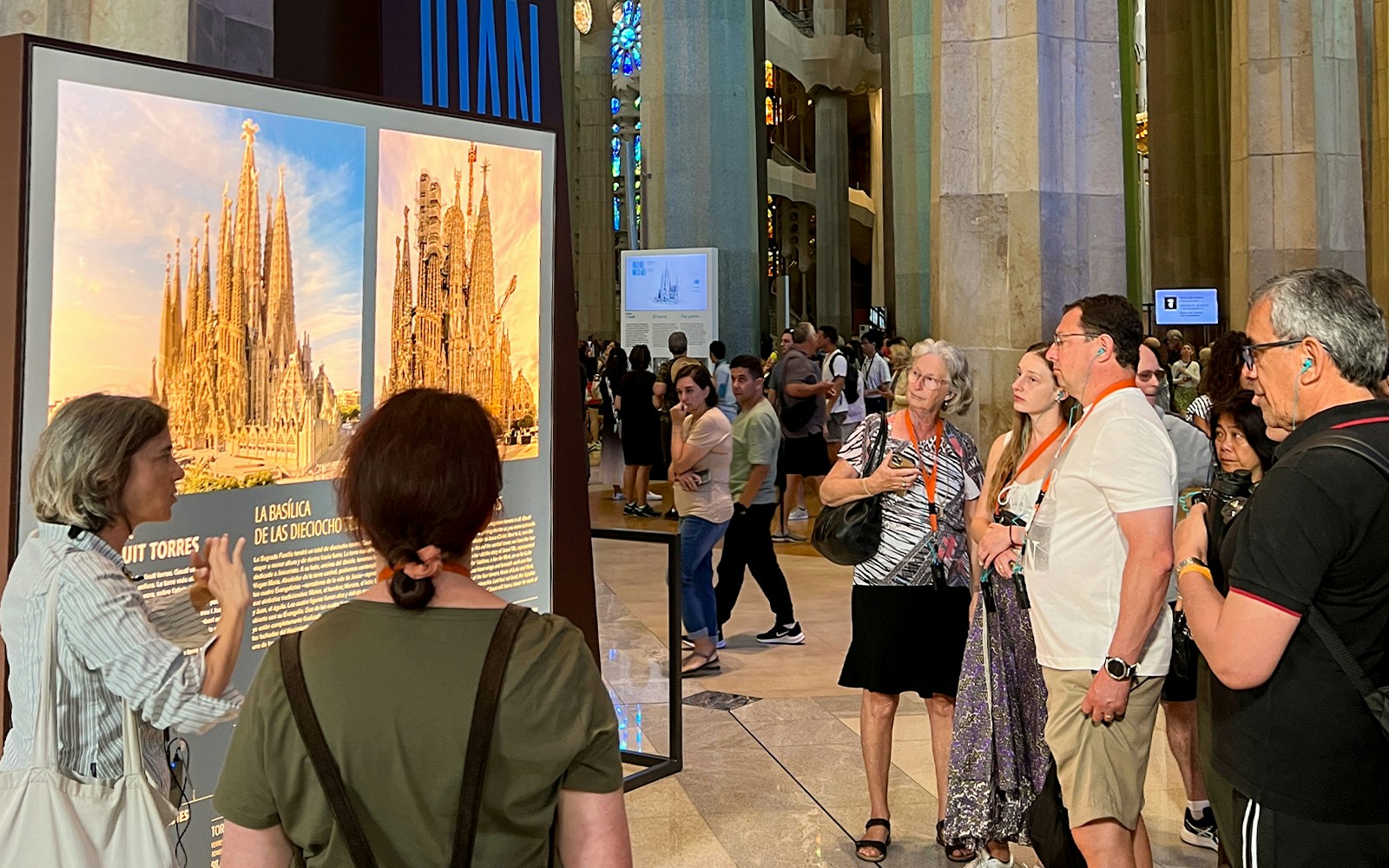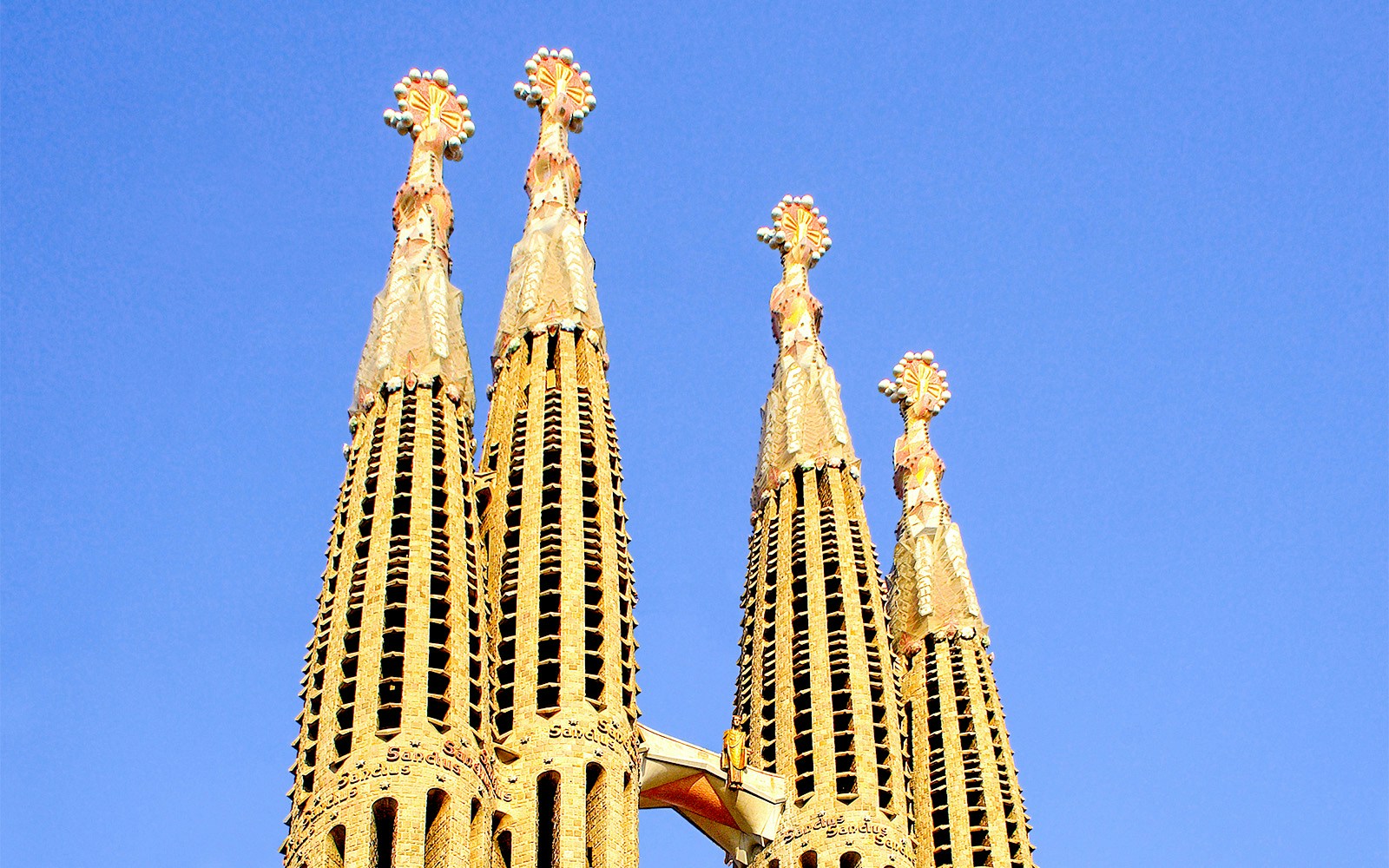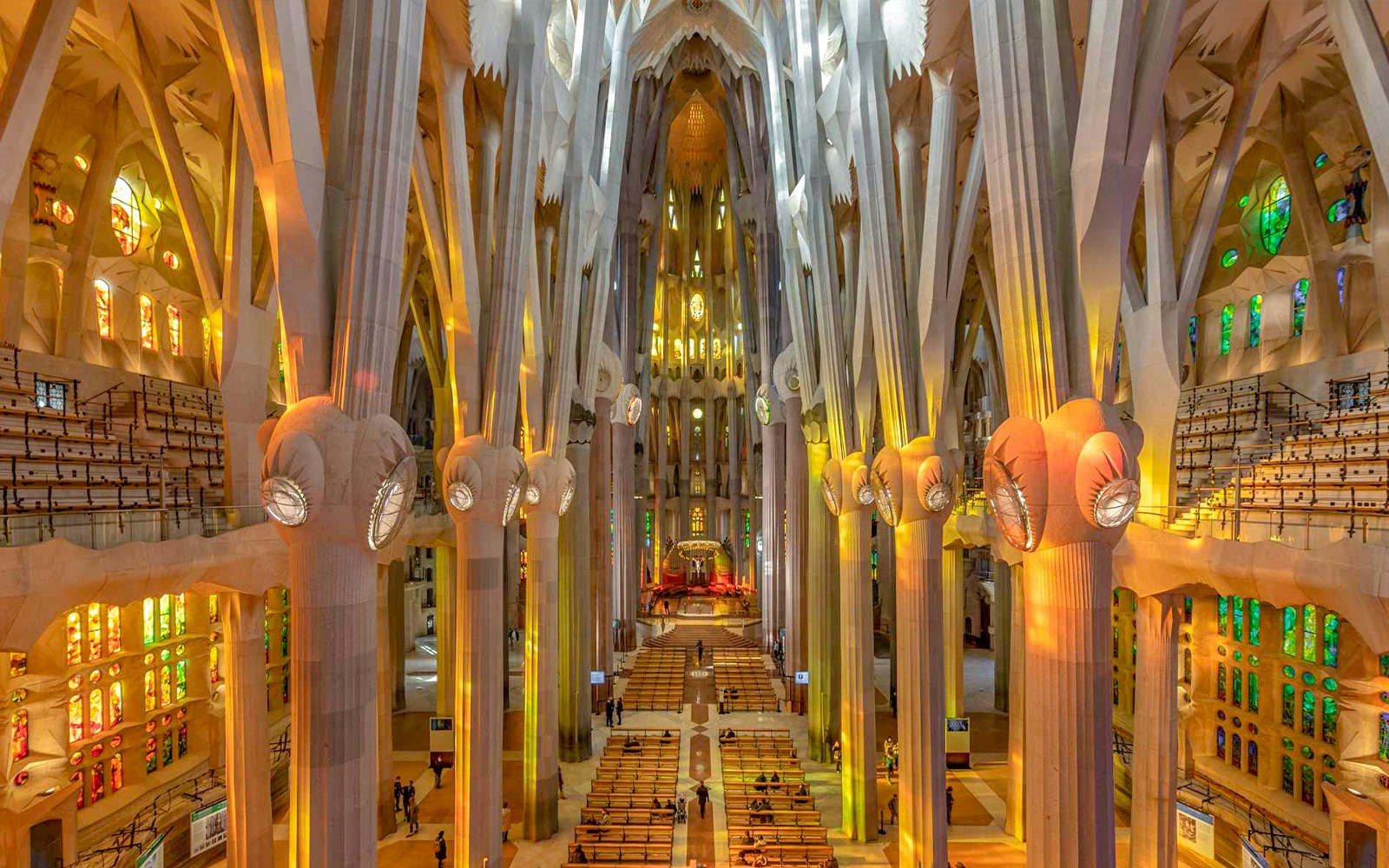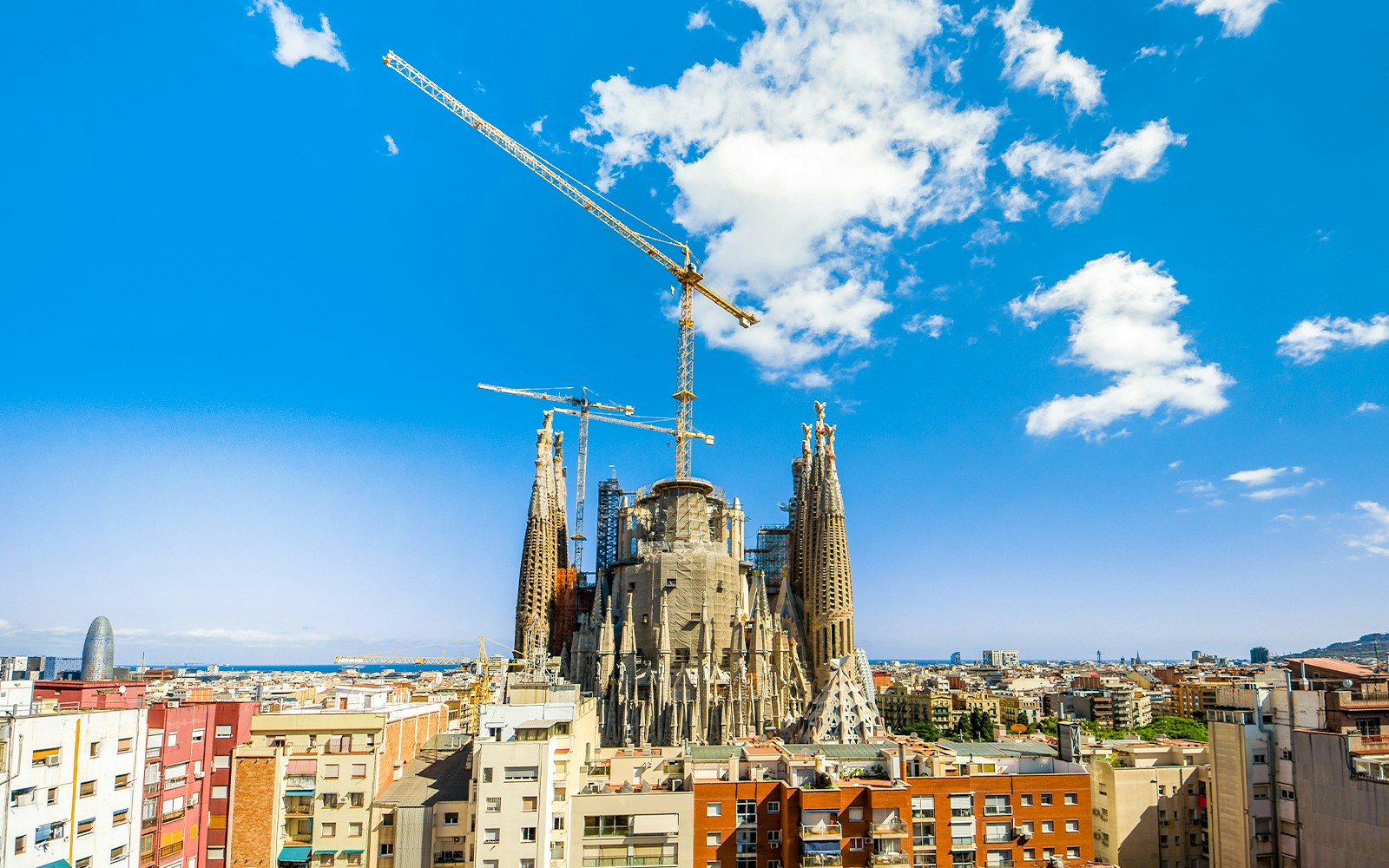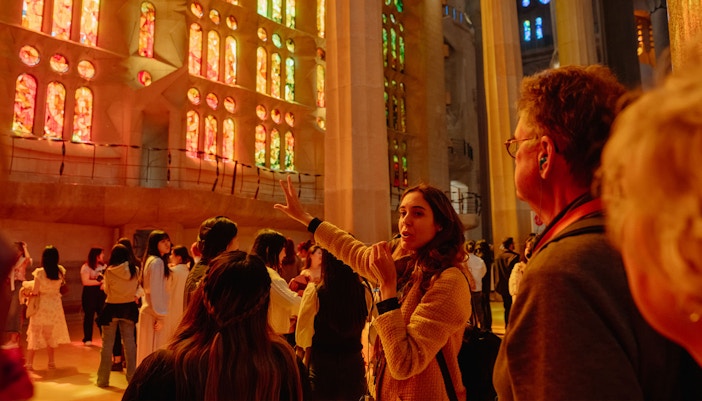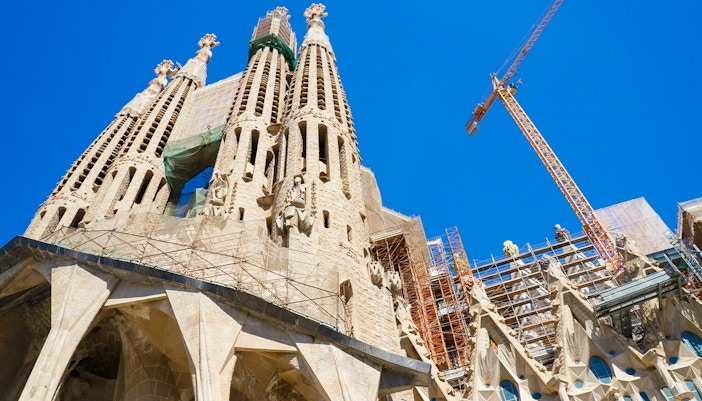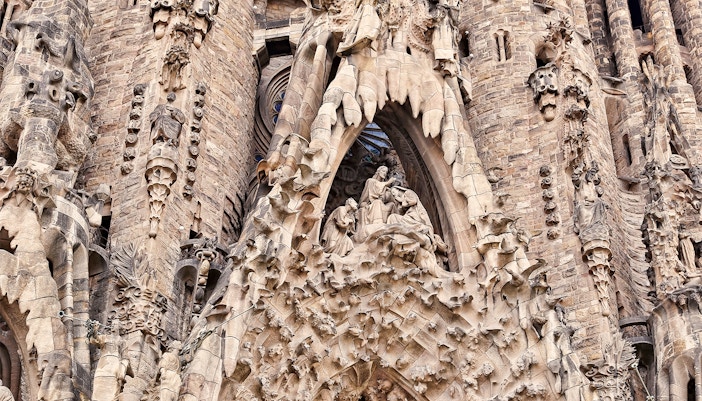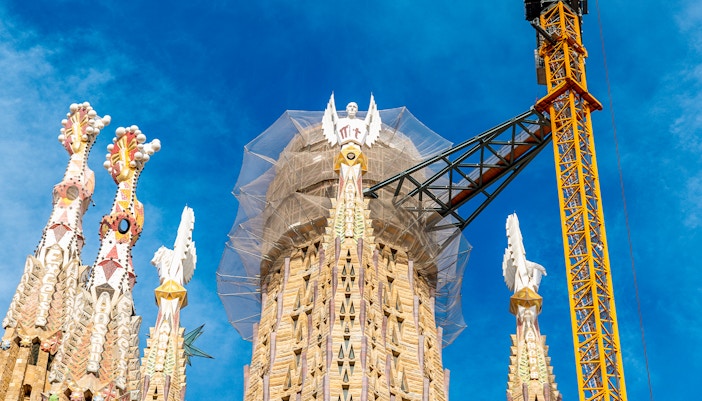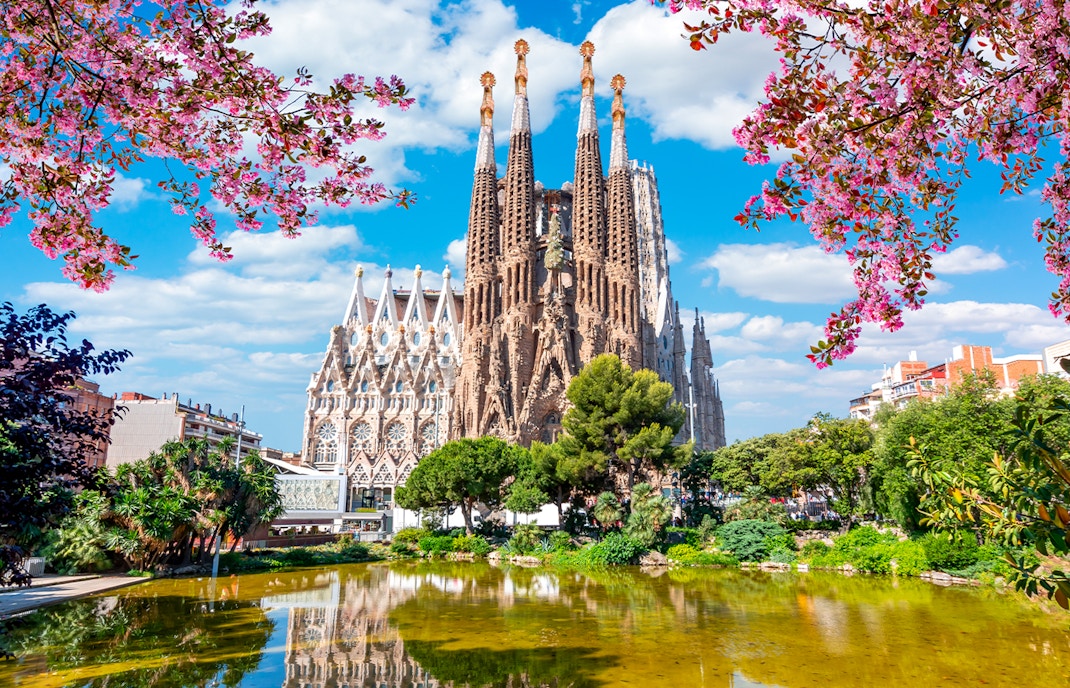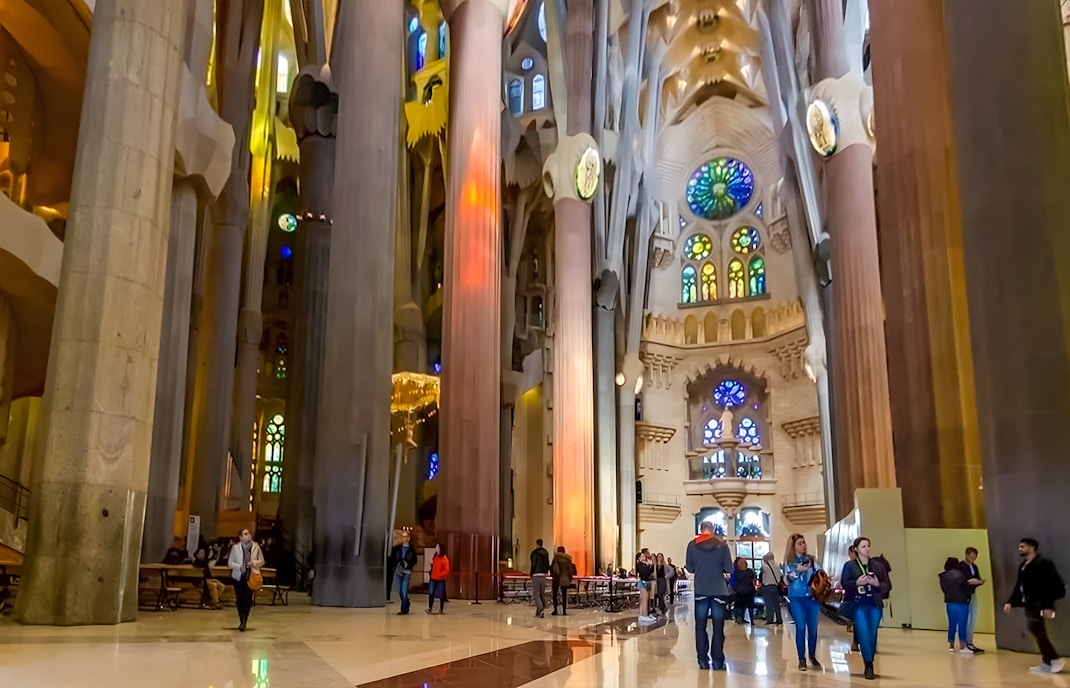Gaudí's takeover in 1883 marked a shift from the original Gothic revival style to a more modernist approach. His holistic vision for the Sagrada Familia integrated nature, religion, and architecture into a complex symbolic structure. The initial focus was on the crypt and the Nativity façade, which exemplifies Gaudí’s intricate style and attention to detail
Main milestones | A detailed timeline
1882
The project's journey commences with architect Francisco de Paula del Villar's neo-Gothic design. Bishop Urquinaona lays the cornerstone, setting the stage for a monumental construction.
1883
Antoni Gaudí assumes control, infusing the project with his unique artistic vision and steering away from its original Gothic constraints.
1885
The Chapel of Saint Joseph is inaugurated within the crypt, hosting its initial masses.
1891
Construction of the Nativity façade begins, which will later become one of the basilica’s most celebrated features.
1914 to 1926
Gaudí dedicates the final years of his life exclusively to the Sagrada Familia, witnessing the completion of the Saint Barnabas bell tower, the only part of his vision fully realized in his lifetime.
1936
The turmoil of the Spanish Civil War leads to the destruction of many original models and plans.
1954
The foundation for the Passion façade is laid, marking a new phase of construction.
1961
A museum opens, detailing the technical and symbolic facets of the temple.
1976
The bell towers of the Passion façade are completed, echoing the advancing construction techniques of the era.
1986
Modern foundations are laid for the naves and main structures, with work continuing into the new millennium.
2005
The Nativity façade and crypt are declared a UNESCO World Heritage Site.
2010
Pope Benedict XVI consecrated the basilica, elevating its status to a minor basilica.
2020
The Covid-19 pandemic briefly halts construction, but work resumes later in the year with significant progress on the tower of the Virgin Mary.
2021
The tower of the Virgin Mary is completed, significantly altering Barcelona's skyline.
2023
The four towers of the Evangelists are inaugurated, marking another major milestone.
